This is a home canning recipe for Salsa Roja, meaning “red sauce”.
It has a very deep, browny red colour and a slightly smoky aroma and flavour.
This is the kind of sauce you use as an ingredient in a dish, such as baked enchiladas, etc. It’s not a dipping salsa. (Salsa just means ‘sauce’, and there are different kinds of ‘sauce.’)
This recipe uses ancho chile peppers. These are not hot peppers; they are very mild peppers used to provide an under-layer of complex taste in Mexican dishes.
See also: Roasted Tomato Guajillo Salsa.
The recipe
Jar size choices: Quarter-litre (½ US pint / 250 ml / 8 oz)
Processing method: Water bath or steam canning
Yield: 3 x quarter-litre (½ US pint) jar
Headspace: 2 cm (½ inch)
Processing time: 25 minutes
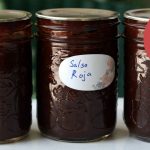
Salsa Roja
Ingredients
- 600 g plum tomatoes (1 ¼ lbs. Weight before prep.)
- 1 onion (small. 40 g to 70 g / 1 ½ oz to 2 ½ oz)
- 6 cloves garlic
- 6 ancho chiles (dried)
- 500 ml water (boiling. 2 cups / 16 oz)
- 4 tablespoons lime juice (fresh. 60 ml / 2 oz)
- salt and pepper (optional)
Instructions
- Start oven heating to 220 C (425 F / Gas mark 7.)
- Wash tomatoes, core, cut in half and place cut side up on large rimmed ungreased baking sheet.
- Leave onion peeled, cut in fours, add to baking sheet skin sides down.
- Peel garlic cloves, seal in a small piece of tin foil, add to baking sheet.
- Bake until tomatoes and onion start to get soft, and brown a bit. Remove baking sheet from oven and let cool.
- Heat an ungreased frying pan (e.g. cast iron or a griddle) until very hot.
- Rinse dried chiles and pat dry.
- Put the dried chiles in the pan, and let each side toast for about 10 seconds, or until they just start to puff. (Don't allow to scorch.)
- Put them in a bowl and cover with the boiling water to soften -- about 15 to 20 minutes.
- Remove peels on roasted veg and add put them all into a food processor bowl.
- When the chiles are soft, drain but reserve water. Remove the stems, rip them open and swish them in the water to rinse off the seeds. Add the chiles (not the water) to the food processor bowl .
- Add lime juice to the food processor bowl.
- Whiz the mixture in the food processor until smooth.
- If desired, Ball says you may add a bit of the chile soaking water to thin the mixture a bit. Discard the rest of the water.
- If desired, adjust taste with salt and pepper.
- Put salsa in a pan and reheat on stove OR put in microwave-safe jug or bowl and zap until piping hot.
- Ladle sauce into heated jars, leaving 2 cm (½ inch) headspace.
- Debubble, adjust headspace.
- Wipe jar rims.
- Put lids on.
- Process in a water bath or steam canner.
- Process jars for 25 minutes; increase time as needed for your altitude.
Nutrition
Reference information
How to water bath process.
How to steam can.
When water-bath canning or steam canning, you must adjust the processing time for your altitude.
What is the shelf life of home canned goods?
Recipe notes
- You will want about 100 g (3.5 oz) of ancho peppers. On average, an ancho weighs 17 g (.6 oz)
- Instead of the whole tomatoes, you could use 350 ml (12 oz 1 ½ cups) of crushed tomatoes. Roast just the onion and garlic; add the crushed tomato to the food processor bowl at step 10 above.
- Salt used (optional) doesn’t need to be pickling salt because we are not worried about clouding here. Instead of salt, you may use a non-bitter salt sub.
- There is no provision for canning larger-sized jars. But these size jars are usually the perfect recipe size anyway.
- You’ll want about 2 key limes. Tip! To get a better juice yield, zap in microwave before cutting for 20 to 30 seconds depending on strength of your microwave. Mind squirting hot juice when slicing into the lime afterward.
- Yes, it’s correct that Ball calls for fresh lime juice here. If you prefer to use bottled, or that is all you have on hand, that is fine, too.
- Ball says the reason for toasting the chiles is to wake up the flavour.
- ‘Salsa’ means ‘sauce’ and ‘roja’ means ‘red.’
Recipe source
- Butcher, Meredith L., Ed. The All New Ball Book of Canning and Preserving. New York: Oxmoor House. 2016. Page 166.
Modifications:
- none
Nutrition information
Per 250 ml (1 cup / 8 oz)
- 146 calories, 30 mg sodium
* Nutrition info provided by https://caloriecount.about.com
* PointsPlus™ calculated by healthycanning.com. Not endorsed by Weight Watchers® International, Inc, which is the owner of the PointsPlus® registered trademark.

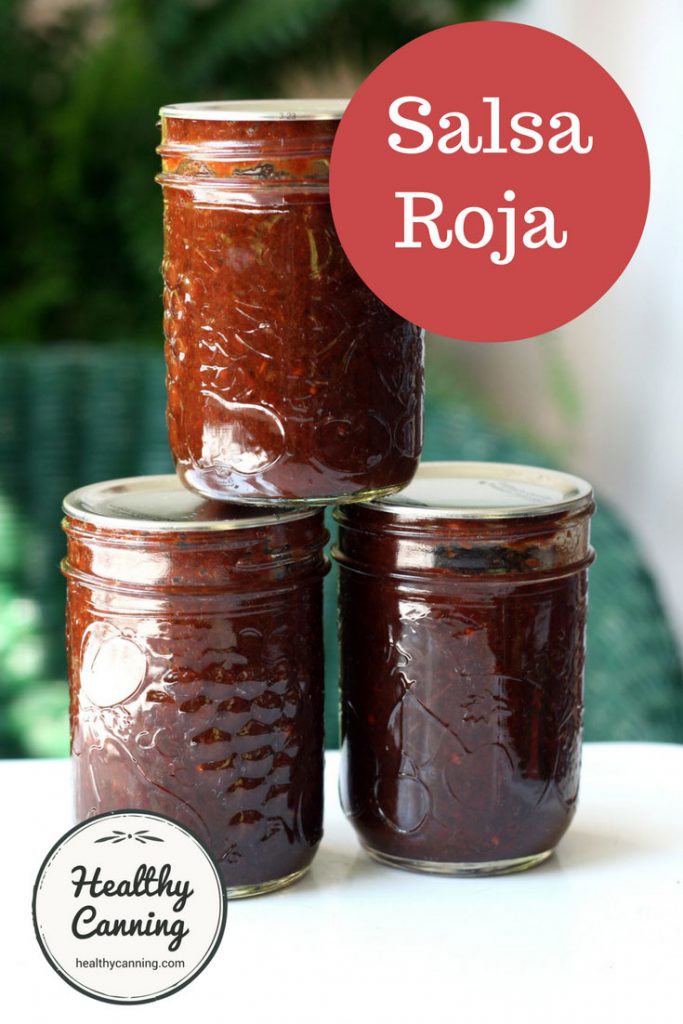
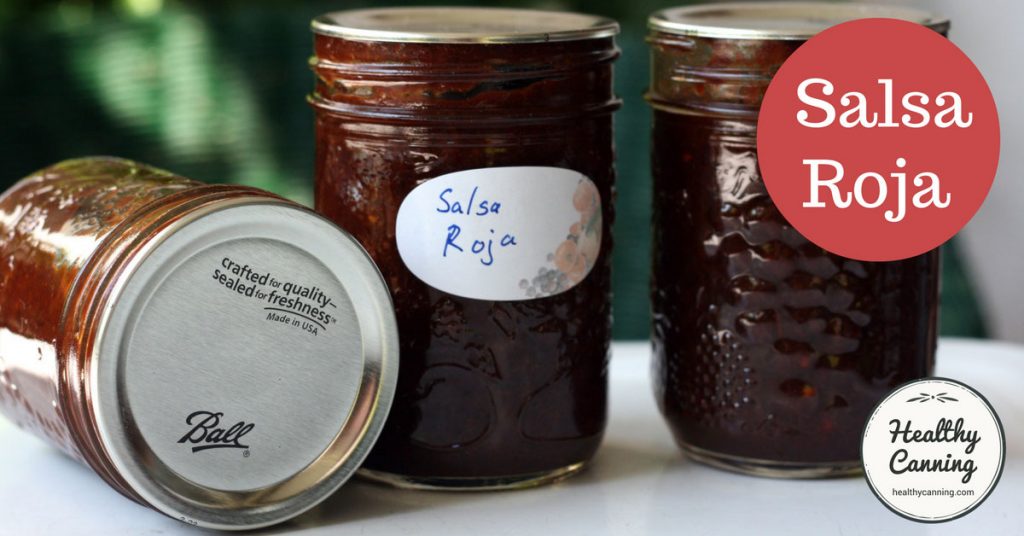
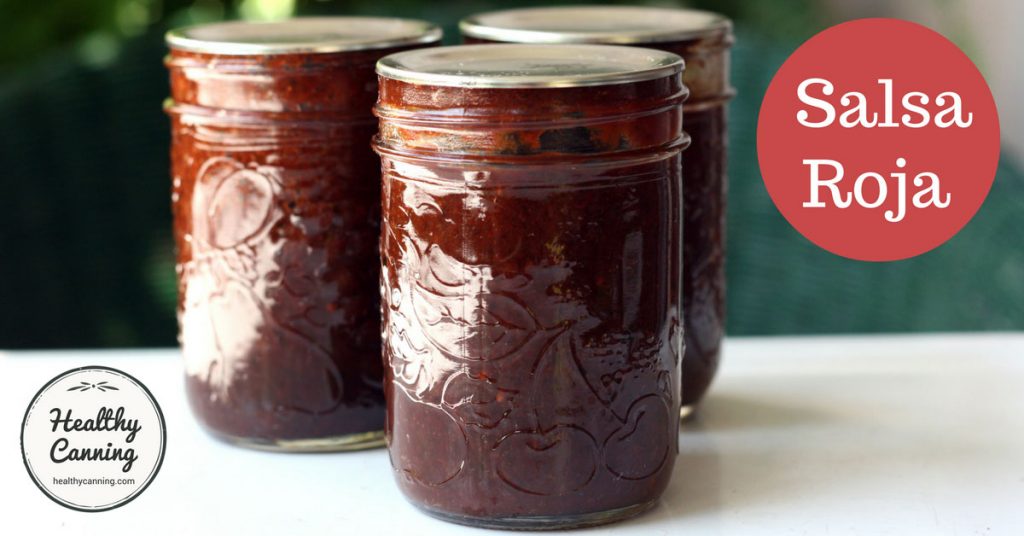
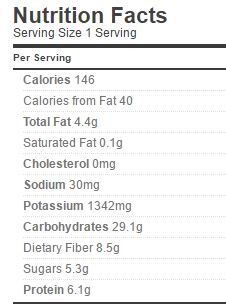

Diane
I followed the recipe exactly. It was very thick. I added 5 tbl of the pepper water to thin and still only got 2 3/4 8 oz jars. When processed it looks really thick. Ot quite paste thick but when you turn the jar on it side, it is very slow to move. Should I thin out and reprocess?
Healthy Canning
It can turn out thick. No need to reprocess. Thinning it the next time around with some bottled lime juice or lemon juice (to avoid lowering the acidity) would also be fine.
Vinyljunkee
Randal – Do you think this would be good (and safe) if I used flame roasted & skinned poblano peppers instead of the anchos? I have a bumper crop this year.
Healthy Canning
Yes, it is fine to swap for equal quantities of pepper, and it would probably be quite nice with the poblano.
Cindy Hancock
This recipe sounds great, but I was wondering if more spices can be added such as cumin oregano and paprika. I have a recipe I like which is close to this one just not sure if it is safe for canning. Thank you
Healthy Canning
It’s okay to change the dry seasoning. Here’s information on safe tweaking of home canning recipes.
Loes
I’m wondering why this is acidic enough for waterbath canning. I would love to make this. Can you help me out?
Love the site, it has so much information!
Healthy Canning
There’s 1 1/3 tablespoons of lime juice in each 1 cup (250 ml / 8 oz) jar. That much, would be enough to acidify a 2 cup (pint / half-litre) jar of tomatoes. And to boot, lime juice is super acidic, even more so than lemon juice.
Here’s a comparison in descending order of the pH of a few typical canning acids (remember, the lower the pH, the higher the acidity):
Apple cider vinegar: 3.10
White distilled vinegar: 2.40 – 3.40
Lemon Juice (fresh): 2.00 – 2.60
Lime Juice (fresh): 2.00 – 2.35
Loes
Thank you, Randal, that helps. Now i´m off canning salsa roja 🙂
Loes